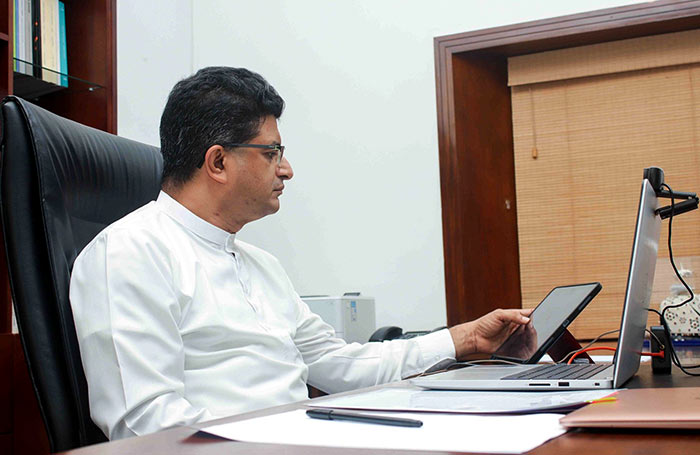Sri Lanka to sign oil terminal deal with India

Sri Lanka has agreed with India to jointly redevelop a strategic oil terminal consisting of nearly 100 large oil tanks, Energy Minister Udaya Gammanpila said Tuesday.
He said the Cabinet approved the proposal and an agreement with India should be signed within this month.
The project comes amid mounting concern over growing Chinese influence in this Indian Ocean island nation.
The facility, with a capacity of 8 million barrels of oil, is located on Sri Lanka’s eastern coast near strategically important Trincomalee port, which is considered as one of the best natural harbors in the world.
The cost of the project was not available.
According to the agreement negotiated by Sri Lanka and Indian officials for more than a year, 24 of the 99 tanks will be provided to Sri Lanka’s state-owned Ceylon Petroleum Corp.
Another 14 tanks which are currently used by Lanka IOC, a subsidiary of IndianOil, will be leased again to the same company for 50 years. The remaining 61 tanks will be managed by Trinco Petroleum Terminal Ltd, which is 51% owned by Ceylon Petroleum and 49% by Lanka IOC.
The plan is to modernize an oil terminal that was built by the British during World War II. It has 99 tanks spread over 827 acres. Originally it had 101 tanks but two were destroyed in a Japanese attack in 1942. Most of the tanks are in disrepair, according to local media reports.
Sri Lanka gained independence from Britain in 1948 but the oil tank remained British property until the government bought it for 250,000 pounds in 1964.
India considers the Indian Ocean its strategic backyard and is troubled by rival China’s growing economic and political influence over Sri Lanka.
Likewise, China considers Sri Lanka to be a critical link in its vast “Belt and Road” global infrastructure building initiative. It has provided billions of dollars in loans for Sri Lankan projects over the past decade. The projects include a seaport, airport, port city, highways, and power stations.
Critics say the Chinese-funded projects are not financially viable and Sri Lanka will struggle to repay the loans.
In 2017, Sri Lanka leased a Chinese-built port located near busy shipping routes to a Chinese company for 99 years to alleviate the heavy burden of repaying the Chinese loan used to build it.
Last year, India’s Adani group secured a deal to develop a container terminal in Colombo, the capital, with a Sri Lankan company and the state-owned Sri Lankan Ports Authority. China also operates a container terminal at same port in a joint venture with Sri Lanka’s Ports Authority.
(AP)
Latest Headlines in Sri Lanka
- Mervyn Silva remanded until March 17, 2025 March 6, 2025
- Sri Lanka Police seek public help to locate former IGP Deshabandu Tennakoon March 6, 2025
- Audit reveals Sri Lanka paid Rs. 3 Billion extra for Indian buses March 6, 2025
- Sri Lanka President calls for tougher action on tax collection March 6, 2025
- Former Minister Mervyn Silva arrested by CID March 6, 2025



There is big komis behind this deal.
Look, these tanks are existing; cannot understand why GOSL cannot spend its own money and rehabilitate them and kick Adani out of the deal.